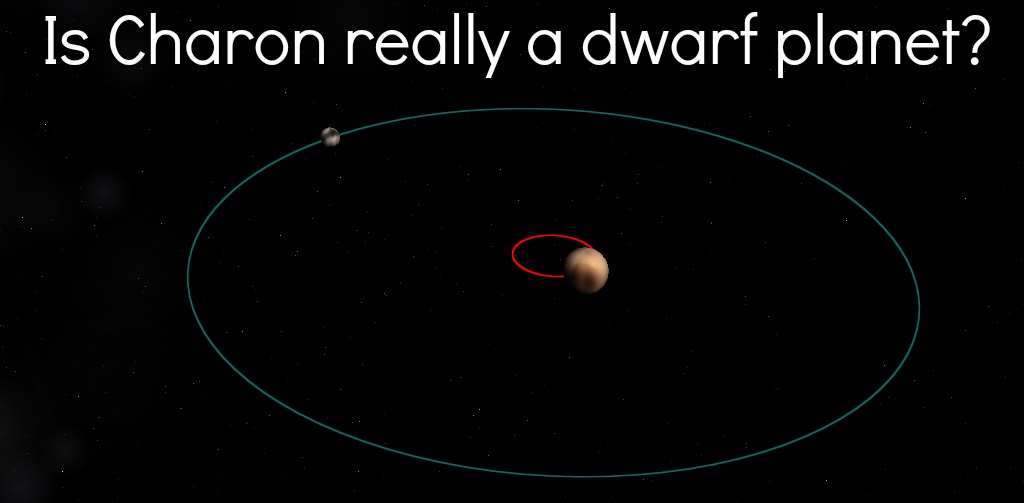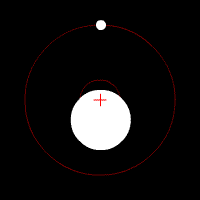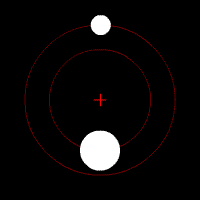
Especially with the discovery of Pluto’s fifth moon in 2012, the distant icy planet and its largest moon Charon has gotten a lot of attention. You’ve undoubtedly heard Pluto referred to as the Pluto-Charon system, or a binary planet system. When you think of a binary system, you imagine two objects orbiting each other, well, according to orbital mechanics, any two bodies in a stable orbit with each other orbit the barycentric coordinates (basically, the center of mass between the centers of two bodies).
What does this mean? Basically, moons and planets or planets and stars all orbit each other. Some examples, Earth orbits the moon and vice versa. The sun also orbits Earth and vice versa. So, what is the difference between a satellite and a binary system? The location of the barycentric coordinates. In cases where one body is much more massive than the second body, the larger body will appear to wobble instead of orbit around a separate point because the barycentric coordinates are within the larger body. Some examples:

For the Earth-Moon system, Earth’s radius is 6,380 km, the barycentric coordinates are 4,670 above Earth’s center. This means these coordinates appear within Earth (at 0.732 Earths radius) and the moon affectively orbits around the Earth. If you use the Earth-Sun system, you find the baycentric coordinates are located 449 km from the center of the sun. The Earth obviously orbits the sun in this case.
Of the planets in the solar system, Jupiter has the greatest affect on the sun since the barycentric coordinates for this system is 1.07 the radius of the sun (meaning, the barycenter is just above the surface of the sun). This system isn’t a binary candidate because Jupiter is a planet and the Sun is a star, a binary system consists of two objects that are very similar.

Next, let us look at the Pluto-Charon system. Here, we find the barycenter is 1.83 the radius of Pluto. In addition, if you look at the orbits of Pluto’s four other moons, you’ll find that they orbit Pluto-Charon instead of limiting themselves to Pluto. Because of this, Pluto and Charon were actually considered a double planet before Pluto’s reclassification in 2006.
Especially after the AIU reclassified Pluto in 2006, they didn’t want to make an official decision on Pluto-Charon’s dwarf planet-moon/dwarf-planet binary status and opted to let public opinion calm down over Pluto’s reclassification instead (after all, if Charon is a moon, Pluto is more important, right?… right?).
For the time being, Charon is not on the list of accepted dwarf planets, and the Pluto keeps the title of Kuiper Object Heavyweight Champion with its five moons.